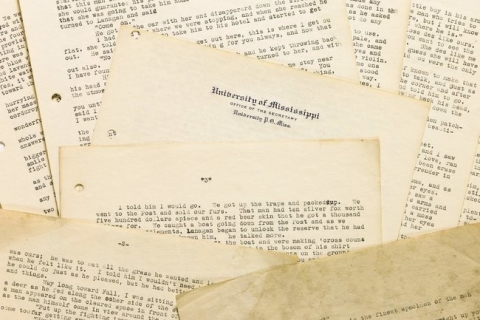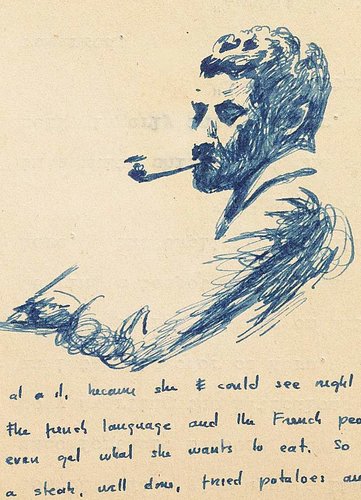The March issue of UK monthly music magazine Q recently hit newsstands, featuring a Beatles 50th anniversary cover with an inset promising “Macca Speaks!”. Did we need another Paul McCartney interview, you may well ask? Is there anything Beatles-related left to tell? It seems there is. McCartney reveals that he once gave serious consideration to using an electronic backing for the 1965 recording of “Yesterday” instead of the string arrangement he ended up with. Now, in itself, this may not seem noteworthy except that, well, it was 1965… what did “electronic” even mean in music at the time?
To find out, we should get acquainted with Delia Derbyshire, composer and arranger at the BBC’s Radiophonic Workshop, who would have scored McCartney’s electronic “Yesterday.” Derbyshire is now best known as the composer of the classic 1963 theme to the original Dr. Who series (above), a fact we will return to. But first, let Q reader and record producer David Mellor explain why he thinks that when McCartney says electronic, he doesn’t mean synthesized music:
The reason I don’t think that synthesizers would have been contemplated is that the Radiophonic Workshop only acquired their first synthesizer in 1965. Perhaps it was already available for use at the time of the recording of Yesterday in 1965, but the historical reports I can find don’t give sufficient level of precision to confirm this. I would contend however that unless the Radiophonic Workshop immediately went synth-crazy as soon as the synthesizer was delivered, most work would have been accomplished using their existing techniques.
So what were the “existing techniques” before the use of synthesizers? McCartney himself alludes to them in saying that Derbyshire had a “hut in the bottom of her garden… full of tape machines and funny instruments.” What McCartney saw were the implements of radio sound effects and also of what was called musique concréte, an early form of electronic music developed by French composer Pierre Schaeffer, Egyptian composer Halim El-Dabh, and others (most notably Olivier Messiaen and Karlheinz Stockhausen). Musique concréte composers manipulated natural sounds with basic recording technologies—microphones, tape recorders, film cameras—to create complex electroacoustic arrangments through careful editing and effects like reverb, echo, and overdubbing. The excerpt below from the BBC’s 1979 documentary The New Sound of Music demonstrates.
It so happened that Delia Derbyshire had mastered these techniques, using them in her arrangement of Ron Grainer’s Dr. Who theme, composed entirely of musique concréte effects. The work of Derbyshire and her colleagues at the BBC sound effects unit captured the imaginations of thousands of science fiction fans and lovers of radio drama, including McCartney, who is quoted from his Q interview saying:
The Radiophonic Workshop, I loved all that, it fascinated me, and still does… there came a time when John (Lennon), because of his association with Yoko and the avant garde, became thought of as the one who turned us all on to that. But that early era was more mine.
Macca can take the credit, but the early era of experimental electronic music belonged to Delia Derbyshire. See her demonstrate her craft below, using tape machines to create a rhythm track.
Derbyshire did, of course, also embrace the use of synthesizers as they became more widely available. Branching out from her BBC work, she began to make music with another composer, Brian Hodgson, under the name Unit Delta Plus. The two soon joined with classical bass player David Vorhaus to form the experimental electronic band White Noise in 1968. The following year, the band released their now-classic album An Electric Storm, which used the tape manipulation techniques Derbyshire demonstrates above as well as the first British synthesizer, the EMS Synthi VCS3. This record, notes Allmusic, is renowned “as one of the first albums to fuse pop and electronic music.” Check out the White Noise song “Love without Sound” below to get a taste of what they were about.
Whatever your interest in the place this song occupies within the wider history of electronic music, there’s no doubt that Derbyshire and company were simply making fantastic experimental pop. If they sound well ahead of their time, that’s because of the influence they’ve had on so many musicians since (why, Pitchfork even gives the White Noise album an 8.6!). After several more productive years, Derbyshire became disillusioned with the state of electronic music in the seventies and withdrew to work in a bookshop and art gallery, but with the mid-nineties revival of the sounds she helped create, she saw a resurgence of recognition as both a genre pioneer and a hero to female musicians and engineers. For an extended look at Derbyshire’s life and art, be sure to watch the documentary Sculptress of Sound, on YouTube in seven parts.
Related Content:
The “Amen Break”: The Most Famous 6‑Second Drum Loop & How It Spawned a Sampling Revolution
Glenn Gould Predicts Mash-up Culture in 1969 Documentary
Josh Jones is a writer, editor, and musician based in Washington, DC. Follow him @jdmagness




